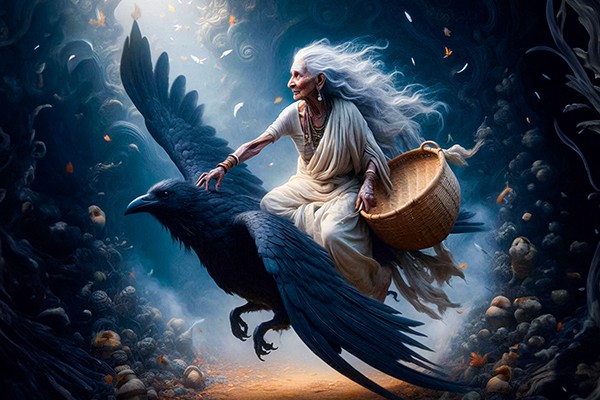
Dhumavati Jayanti is a deeply meaningful day that celebrates the presence of Devi Dhumavati, the seventh Mahavidya, who represents wisdom, detachment, and transcendence. This special occasion honors the Divine Mother in her form as the widow goddess, representing the strength found in solitude, the beauty of renunciation, and the journey beyond worldly illusions. Dhumavati embodies the profound essence that transcends the physical realm, leading earnest seekers on a transformative journey toward freedom through deep self-discovery.
Dhumavati Jayanti will be celebrated on
Monday, June 22, 2026.
This special day invites us to engage in heartfelt prayers, reflective practices, and profound contemplation on the essence of life and the fleeting nature of our physical surroundings. Celebrating Dhumavati Jayanti with heartfelt devotion is thought to illuminate the mind, clear away challenges, and grant profound spiritual strength and insight.
The festival beautifully highlights the profound impact of divine wisdom, the importance of letting go for spiritual advancement, and the nurturing support of Devi Dhumavati for those on their journey towards liberation from the cycle of birth and death.
Festival Date, Time, Muhurat & Tithi
Dhumavati Jayanti will be observed on
Monday, June 22, 2026.
Ashtami Tithi (8th lunar day) of the Jyeshtha month as per the lunar calendar.
Key Timings for Dhumavati Jayanti 2026:
Dhumavati Jayanti on
Monday, June 22, 2026
Ashtami Tithi Begins
- 03:20 PM on Jun 21, 2026
Ashtami Tithi Ends
- 03:39 PM on Jun 22, 2026
Note: Sunrise and sunset vary by region and date due to India's geographical diversity. For exact timings, please refer to local astronomical data.
Significance & Importance of Dhumavati Jayanti
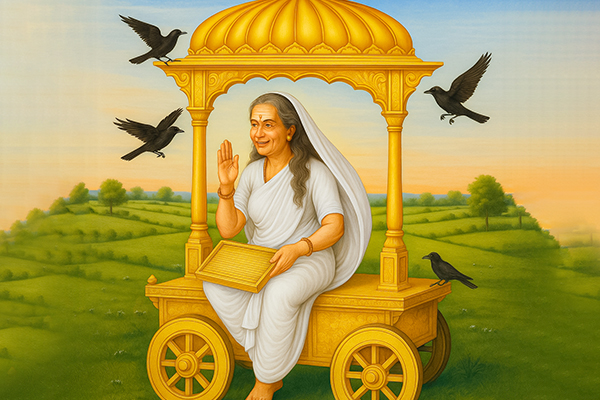
The word ‘Dhumavati’ is made of ‘Dhuma’ meaning ‘Smoke’ and ‘vati’ meaning ‘being that’, the smoky one. She kills the demons by creating or ejecting dangerous smoke from her body. She is the seventh goddess of the ten Mahavidyas or the ten great divine mothers. She embodies the forces of detachment, destruction, and transcendence, teaching spiritual aspirants the impermanence of worldly existence. Unlike other goddesses who represent nurturing, prosperity, and fertility, Dhumavati signifies the void, the dissolution of material illusions, and the wisdom that emerges from solitude and suffering. Her presence is often linked to the dissolution phase of the cosmic cycle, reminding devotees that all things in the material world are temporary and subject to decay.
Observing Dhumavati Jayanti bestows relief from suffering, frustration, and mental distress. Devotees worship her to seek protection from poverty, disease, misfortune, and adversities. She is regarded as the goddess who grants strength to endure hardships and provides clarity in times of despair. Those who face obstacles in their spiritual or material lives turn to Devi Dhumavati for guidance, as she is known to favor seekers who practice renunciation and inner reflection. By meditating upon her, one gains insight into the transient nature of life and develops the resilience to overcome difficulties.
Dhumavati’s iconography itself carries deep symbolism. She is depicted as an old, widowed woman, riding a horseless chariot through a cremation ground. Her appearance represents the state of abandonment, yet also the ultimate state of independence from all worldly attachments. This imagery conveys that wisdom is often born from suffering and that spiritual progress requires one to go beyond conventional notions of beauty, fortune, and prosperity. In tantric traditions, she is revered as a powerful force that helps in breaking illusions and attaining moksha (liberation).
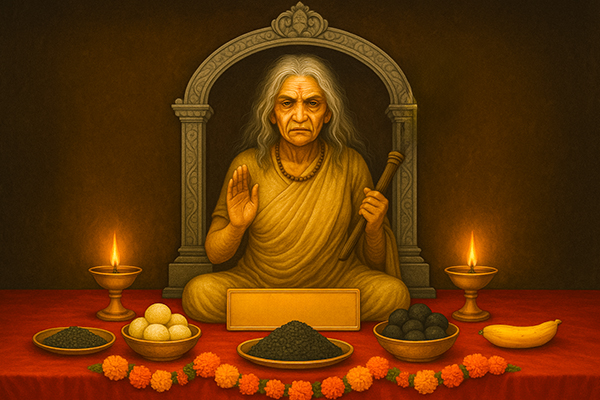
On Dhumavati Jayanti, devotees perform special prayers, chant her mantras, and engage in meditation to invoke her blessings. Offerings such as black sesame seeds, mustard oil lamps, and unseasoned food are made to honor her, as she is known to prefer simplicity and austerity. Some devotees also observe fasting, seeking her divine grace to overcome sorrow and ignorance. Temples dedicated to the Mahavidyas conduct elaborate pujas and homas to pacify her fierce energies and seek her protection.
Ultimately, Dhumavati Jayanti serves as a reminder that even in darkness, wisdom can be found. She teaches the profound lesson that detachment and renunciation lead to spiritual enlightenment. By honoring her, devotees embrace the reality of life’s impermanence and cultivate the strength to transcend suffering, moving closer to self-realization and ultimate liberation.
Story of Dhumavati Jayanti
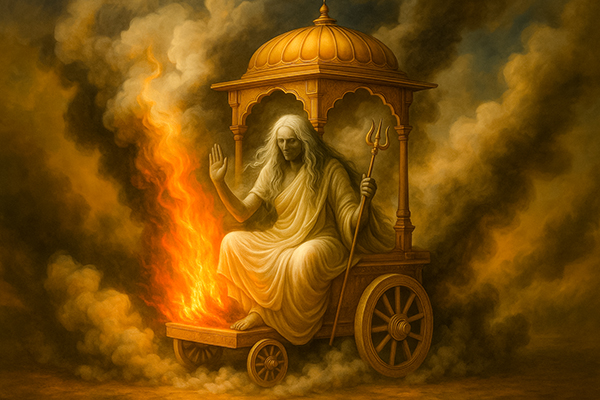
In the vast tapestry of divine manifestations, Dhumavati stands apart as a goddess shrouded in mystery, feared by many yet profoundly revered by those who seek ultimate truth. She is the embodiment of suffering, loss, and misfortune, yet within her very essence lies the profound wisdom that all things—wealth, health, relationships, and power—are transient illusions. Like the final flickering embers of a dying fire, she represents the phase of dissolution, where all that was once vibrant and prosperous fades into ash.
Long ago, when Goddess Sati, the divine consort of Bhagwan Shiva, immolated herself in the fire of Daksha’s yagna, the world trembled at the consequences of such an act. From the sacred smoke that rose from her ashes, a new goddess emerged—Dhumavati, the smoky one, the widow goddess who would forever symbolize the desolation that follows destruction. Unlike the benevolent goddesses who grant wealth, fertility, and happiness, Dhumavati’s presence heralds the stripping away of illusions, forcing souls to confront the raw, unembellished reality of existence.
Ancient scriptures associate her to Alakshmi, the harbinger of misfortune, and Nirriti, the Vedic goddess of decay and death. She shares an eerie resemblance with Jyestha, the elder sister of Lakshmi, who despises auspiciousness and thrives in chaos, crow-ridden lands, and places abandoned by fortune. Dhumavati, too, lingers where others fear to tread—cemeteries, deserted ruins, and barren landscapes, where the echoes of loss and suffering whisper through the wind. She is depicted as an old, widowed woman, disheveled and solitary, riding a chariot without horses—an image of stillness, signifying the end of all movement, the cessation of desire, and the inevitable embrace of nothingness.
Yet, in her fearsome form lies a lesson that only the wisest souls dare to understand. The Srimad Bhagavatam (10.88.8) reveals an eternal truth, spoken by Bhagwan Himself:
'If I especially favor someone, I gradually deprive him of his wealth. Then the relatives and friends of such a poverty-stricken man abandon him. In this way, he suffers one distress after another.'
At first glance, such a statement seems harsh, even merciless. But behind this veil of suffering lies Bhagwan’s profound compassion. When a devotee becomes intoxicated by material wealth, lost in pride and attachment, the Bhagwan, in His divine wisdom, takes everything away, not as a punishment, but as a blessing in disguise. He removes the golden chains that bind the soul to illusion, forcing the devotee to seek refuge in Him alone. And who is it that carries out this sacred task? It is Dhumavati—she who introduces the devotee to poverty, loss, and suffering, not out of malice, but as a mother who knows that true growth is born from hardship.
When the world turns away, when friends and family abandon, when the weight of misfortune becomes unbearable, the devotee stands at a crossroads. Some may fall into despair, cursing their fate. But the wise ones—those who recognize the hidden hand of Bhagwan in all things—turn inward, finding solace in prayer, in remembrance, in the pure devotion that arises only when all else is lost. Stripped of arrogance, free from the intoxication of wealth and power, the soul finally sees with clarity, the material world is fleeting, but Bhagwan is eternal.
Thus, to worship Dhumavati is not to invite misfortune but to embrace its deeper meaning. She teaches the ultimate lesson: that suffering is not the enemy, but the teacher. She is the revealer of truth, the destroyer of ego, the fierce mother who drags her children out of illusion and into enlightenment. For those who seek not transient joys but eternal wisdom, she is the guiding force, the goddess who leads beyond suffering, beyond attachments, beyond all illusions, into the vast, unchanging truth of the Divine.
How to celebrate Dhumavati Jayanti
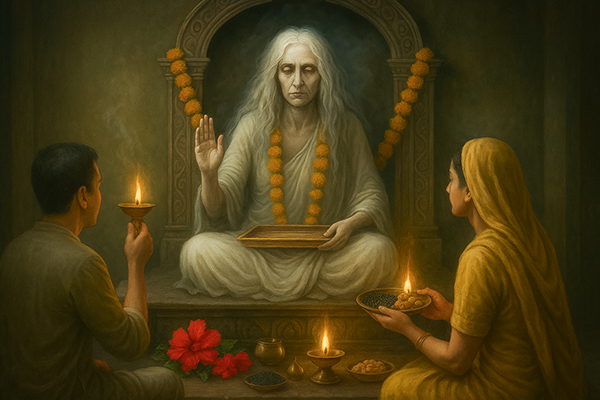
Dhumavati Jayanti is a sacred occasion dedicated to the worship of Dhumavati Devi, the seventh Mahavidya, who embodies the wisdom gained through loss, detachment, and transcendence. Observing this day with devotion helps devotees overcome suffering, misfortune, and ignorance, leading them toward inner strength and spiritual awakening.
On this day, devotees wake up early and take a ritual bath before beginning the puja. The worship of Dhumavati Devi is typically performed in solitude or in temples dedicated to the Mahavidyas. As she is associated with renunciation, inauspiciousness, and detachment, her puja is usually conducted in a quiet and meditative atmosphere. Offerings such as black sesame seeds, mustard oil, and dry fruits are presented to her, along with flowers like hibiscus and a diya (lamp) made of mustard oil. Unlike other goddesses, she is not offered sweet dishes but rather simple and sattvic (pure) food items.
Chanting of Dhumavati mantras, such as the Dhum Dhum Dhumavati Swaha, is an essential part of the celebration. Devotees meditate upon her form, seeking her blessings for liberation from worldly attachments and for protection from hardships. Reading scriptures related to the Mahavidyas, such as Shaktisangama Tantra, and reflecting on the deeper meaning of suffering and detachment can enhance one’s spiritual understanding.
As Dhumavati represents solitude and renunciation, charity and feeding the poor on this day are considered highly auspicious. Donating food, clothes, and essential items to widows and those in need is believed to please the goddess. Some devotees observe fasting or eat only simple meals to cultivate self-discipline and detachment from material pleasures.
Dhumavati Jayanti is not a festival of grand celebrations but a day of deep contemplation. It reminds devotees that suffering is a teacher, detachment is a path to wisdom, and true spiritual growth comes when one transcends the illusions of the material world. By honoring Dhumavati, one seeks strength, resilience, and the ultimate truth beyond joy and sorrow.
Dhumavati Jayanti Puja Vidhi (Puja Procedure)
.jpg)
Dhumavati Jayanti is a sacred day to honor Goddess Dhumavati, the embodiment of detachment, wisdom, and transcendence. Worshipping her on this auspicious day helps devotees overcome suffering, misfortune, and ignorance while guiding them toward spiritual enlightenment.
Below is a step-by-step puja procedure to observe this day with devotion and reverence.
- Purification and Sankalpa (Vow) – Wake up early, take a ritual bath, wear clean white or dull-colored clothes, and sit in a quiet space. Take a sankalpa (vow) to perform the puja with sincerity and devotion.
- Setting Up the Puja Altar – Place a clean cloth on a wooden platform or altar. Install an image or idol of Goddess Dhumavati, preferably depicting her in her traditional form with a smoky complexion and holding a winnowing basket.
- Invocation of the Goddess – Light a mustard oil lamp and incense sticks. Offer flowers like hibiscus or dried flowers, as fresh ones are typically not used in her worship. Meditate upon her form and chant Om Dhum Dhum Dhumavati Swaha to invoke her presence.
- Offering Sacred Items – Present black sesame seeds, mustard oil, dry fruits, and a simple sattvic food offering. Sweet dishes are generally avoided in Dhumavati’s worship.
- Mantra Chanting and Japa – Recite Dhumavati Devi’s mantras, especially the Dhumavati Beej Mantra (Dhum Dhum Dhumavati Swaha) 108 times using a rudraksha mala for spiritual elevation.
- Reading Scriptures and Stotras – Read passages from the Shaktisangama Tantra, Durga Saptashati, or texts related to the Dasa Mahavidyas to understand her deeper significance.
- Meditation and Introspection – Sit in silence and meditate on the transient nature of the material world. Reflect on detachment, renunciation, and the spiritual lessons that suffering brings.
- Charity and Feeding the Needy – Donate food, clothes, or essential items to widows, the poor, and those in distress, as Dhumavati represents those who have lost worldly comforts. Feeding crows, which are associated with her, is also considered auspicious.
- Aarti and Prarthana (Prayer) – Perform a simple aarti using a mustard oil lamp while chanting her praises. Offer heartfelt prayers for wisdom, inner strength, and liberation from ignorance.
- Concluding the Puja – Bow before the goddess, seek her blessings, and distribute the offered food as prasad. Maintain a day of quiet contemplation and avoid indulging in material distractions.
Dhumavati Jayanti is not a day of grand festivities but a time for spiritual reflection and self-discipline. By performing this puja with sincerity, one seeks the goddess’s grace to overcome hardships, cultivate detachment, and attain true wisdom beyond worldly illusions.
Dhumavati Jayanti Puja Mantras
Dhumavati Beej Mantra
धूं धूं धूमावती स्वाहा
Dhum Dhum Dhumavati Swaha
This is the fundamental beej (seed) mantra of Dhumavati Devi. Chanting it 108 times enhances spiritual wisdom and helps in overcoming obstacles.
Dhumavati Gayatri Mantra
ॐ अलक्ष्मी विध्ये विद्महे धूमावत्यै धीमहि। तन्नो देवी प्रचोदयात्॥
Om Alakshmi Vidhye Vidmahe, Dhumavatyai Dhimahi, Tanno Devi Prachodayat
Chanting this mantra removes illusions, grants inner clarity, and enhances spiritual progress.
Dhumavati Kavach Mantra (For Protection)
ॐ धूमावती महाकालि भूतप्रेतादि सेविते। भयभीतं मम नित्यं रक्षा रक्षा नमोऽस्तुते॥
Om Dhumavati Mahakali Bhootapretadi Sevite, Bhayabhītam Mama Nityam Raksha Raksha Namo’stute
This mantra seeks the goddess’s protection from fear, negative energies, and evil forces.
Use a rudraksha mala (rosary) and chant the mantras 108 times with full devotion. Maintain a meditative state, reflecting on detachment and the transient nature of the world. Chanting these mantras with sincerity on Dhumavati Jayanti bestows wisdom, removes hardships, and leads to spiritual enlightenment.
Dhumavati Jayanti Vrat Vidhi (Fasting Procedure)
.jpg)
Observing a fast on Dhumavati Jayanti is considered highly auspicious for those seeking spiritual growth, detachment from material illusions, and protection from hardships.
Devotees wake up early in the morning, take a bath, and wear simple, light-colored clothing. Before beginning the fast, they take a sankalpa (vow), dedicating the vrat to Goddess Dhumavati and praying for wisdom, strength, and liberation from suffering. As she represents renunciation and detachment, fasting on this day is a way to cultivate self-discipline and inner purification.
The fast can be observed in different ways depending on one's capability. Some devotees follow a nirjala vrat (complete fast without food or water), while others observe an upvaas by consuming only sattvic food such as fruits, milk, and dry fruits. Offerings to the goddess include black sesame seeds, mustard oil, and simple food items, avoiding sweets and grand feasts.
Throughout the day, devotees chant Dhumavati mantras, meditate upon her form, and read scriptures related to the Dasa Mahavidyas. Engaging in silence and deep contemplation is also encouraged to connect with the goddess’s energy.
The fast is concluded in the evening after performing the final prayers and aarti. Devotees seek the goddess’s blessings and distribute prasad to those in need, emphasizing charity as an important aspect of the vrat. Feeding crows, which are associated with Dhumavati, is considered highly meritorious.
This vrat is believed to remove ignorance, dissolve past karmic debts, and guide devotees toward self-realization, making it a powerful spiritual practice on the path of detachment and inner wisdom.
Dhumavati Jayanti Vrat Katha (Traditional Fasting Story)
.jpg)
In the celestial ages of yore, when the universe was still young and divine forces shaped the destiny of creation, Goddess Sati, the beloved consort of Bhagwan Shiva, was born into the royal household of King Daksha. Though she was an embodiment of purity and devotion, her father harbored deep disdain for Shiva, whom he considered an unorthodox ascetic, unworthy of divine reverence. This arrogance led Daksha to commit a grave mistake—he organized a grand yagna (sacrificial ritual) and invited all the celestial beings, sages, and deities, yet deliberately excluded Bhagwan Shiva from the sacred assembly.
When Sati learned of this insult, her heart burned with agony. Against Shiva’s counsel, she resolved to confront her father and defend her husband's honor. Draped in divine grace yet burdened by sorrow, she arrived at the yagna, where luminous sages and radiant deities had gathered. But instead of receiving a daughter’s welcome, she was met with her father’s scornful words. Before the exalted assembly, Daksha mocked Shiva, belittling his austere lifestyle and disregarding his supreme divinity. The wounds inflicted by her father’s words pierced deeper than any weapon, and unable to bear the dishonor of her beloved Bhagwan, Sati invoked her yogic powers, renouncing her earthly body in a blaze of divine fire.
As her mortal form was reduced to ashes, the atmosphere trembled with an ominous stillness. From the smoldering embers of grief and renunciation, a formidable goddess emerged—her complexion dark as storm clouds, her attire worn and tattered, her form exuding a misty smoke (dhuma). Her face bore the lines of time, her hair disheveled, her eyes filled with both sorrow and searing wisdom. She held a winnowing basket in her hands, signifying the separation of truth from illusion, wisdom from ignorance. This was Goddess Dhumavati, the smoke-born manifestation of sorrow, detachment, and the transient nature of worldly existence. Unlike the luminous and youthful Sati, she embodied the wisdom that arises from suffering, the strength that emerges from loss, and the realization that all attachments are fleeting.
A chilling hush spread across the cosmos as deities and sages beheld this powerful yet enigmatic form. Dhumavati was inauspicious in appearance, yet she carried the greatest spiritual truth—only when one detaches from illusions, when suffering burns away the veils of ego and desire, does true enlightenment dawn. She wandered through desolate lands, residing in cremation grounds and forsaken places, embodying the lessons learned through hardship and renunciation. The sages understood that she was not a goddess of misfortune but a divine force that stripped away ignorance, teaching the ultimate path of liberation.
Since that time, those who seek wisdom beyond material comforts, who wish to transcend suffering and illusions, worship Goddess Dhumavati. She is revered as the supreme teacher of detachment, reminding devotees that loss is not an end but a passage to higher truth.
Observing a fast on Dhumavati Jayanti is believed to please the goddess, helping devotees overcome hardships, ego, and worldly attachments. Those who surrender to her teachings, embracing her presence with reverence, are blessed with profound spiritual clarity, inner strength, and the wisdom to walk the path of ultimate liberation.
Thus, the vrat katha of Dhumavati Devi stands as a timeless testament to the power of transcendence, teaching that even in the ashes of despair, the divine light of truth emerges.
Puja Utensils, Essentials
Rudra Centre brings an extensive collection of Puja Articles which caters to all that is required for daily and special Puja Vidhis. We offer variants of designs and sizes in each category. The list includes handcrafted Puja Mandirs, Puja Pedestals, offering Bowls, Panchpatra, intricately carved Puja Thalis, Abhishek Vessels, in different materials, Pure Silver/German Silver articles like Kalash, set of Shodash Upachara and Several other Puja Articles, which we deliver at your doorstep.
Visit the complete collection:
Shree Dhumavati Yantra
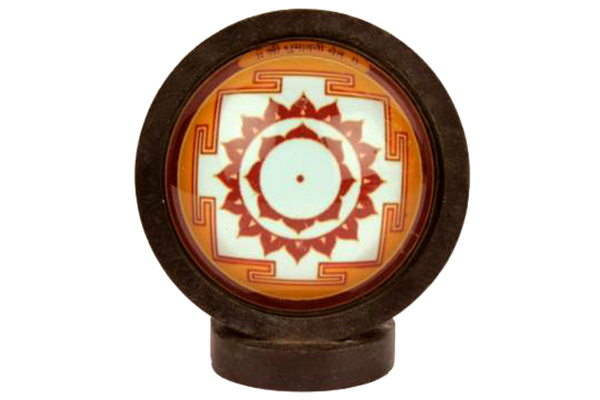
Goddess Dhoomavati gives total protection to her worshipper from any sort of black magic, all types of court cases, protection of wealth and protection from enemies. It neutralizes the effects of Planet Rahu.
5 Mukhi Rudraksha Malas
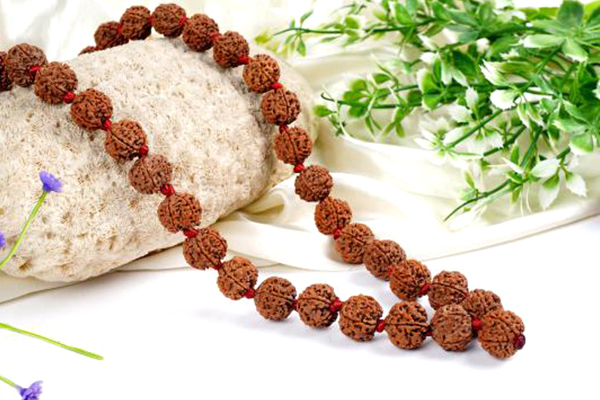
Visit our Exclusive Collection
Collection of 5 Mukhi Guru Mala collection at Rudra Centre is strung as per RRST (Rudraksha Ratna Science Therapy) using handpicked best quality provides maximum benefits to the wearer. 5 Mukhi Rudraksha is ruled by Bhagwan Rudra Kalagni (Shiva) and Planet Guru (Jupiter) and governs Throat (Vishuddha) Chakra. These five mukhi Malas are widely used for Japa (chanting mantras).
Dhumavati Puja and Yagna
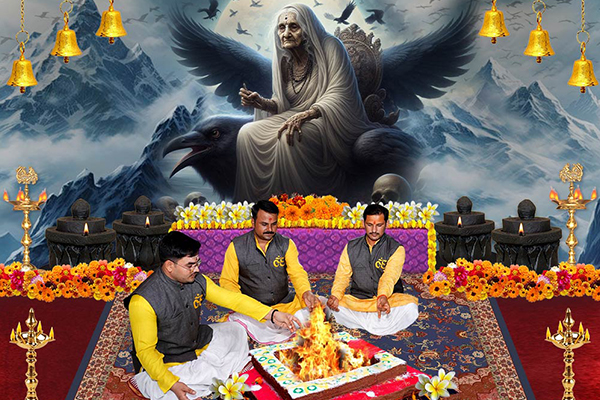
Goddess Dhumavati signifies negative energies such as frustration, disappointment, unfulfilled desires, humiliation, defeat, loss, frustration, sorrows, poverty, destitution and suffering and loneliness. Although Goddess Dhumavati is associated with inauspicious virtues, worshipping her blesses one with ultimate knowledge and awareness about real truths and relief from all troubles.
Benefits of
Dhumavati Puja
:
• For divine grace and blessings of Maa Dhumavati Devi
• For spiritual upliftment, ultimate awareness and truth
• For wish fulfillment and all round success
• For protection and relief from black magic and negative energies
Devi scriptures describe her as tender-hearted and fulfiller of devotees’ desires. One who worships her selflessly is said to attain siddhis (supernatural powers), be saved from troubles and achieve ultimate knowledge and mukti.
Rudra Centre Puja Services is the oldest and most trusted Online Puja Services provider in the world. Over 20 years we have organized Yagnas, Pujas, Homas and Kathas like Ati Rudra Mahayajna, Sahasra Chandi Homa, Akhand Ramayan Paath, Shiva Maha Puran Katha, 4 Prahar Mahashivratri Mahapuja with teams of 100’s of curated priests for the benefit of mankind and our global clientele.
Conclusion
Dhumavati Jayanti is a profound reminder of life’s greatest truths, such as impermanence, detachment, and the wisdom born from suffering. In a world where we often seek light, prosperity, and beauty, Dhumavati stands as a stark yet powerful presence, teaching us that there is divine grace even in loss, sacred wisdom even in sorrow. She embodies the realization that challenges, failures, and disappointments are not punishments but transformative experiences that strip away illusions and bring us closer to self-awareness and ultimate liberation.
To honor Dhumavati Devi is to acknowledge that life is a cycle of both joy and despair, gain and loss, attachment and renunciation. Through her, we learn that strength is not found in clinging to fleeting comforts but in embracing the trials that shape our souls. Observing Dhumavati Jayanti, whether through fasting, prayer, or silent contemplation, is an opportunity to let go of ego, arrogance, and desires that bind us. It is a moment to reflect on our own struggles and understand that every hardship carries a deeper lesson, guiding us toward a higher truth.
As you pay homage to the goddess on this sacred day, let her presence awaken within you the courage to face life’s adversities with resilience, the wisdom to see beyond the temporary, and the grace to surrender to the divine flow of existence. In the silence of her presence, may you find the strength to rise from your own ashes, just as she did, emerging wiser, freer, and closer to the eternal truth.


-in-Astrology.jpg)
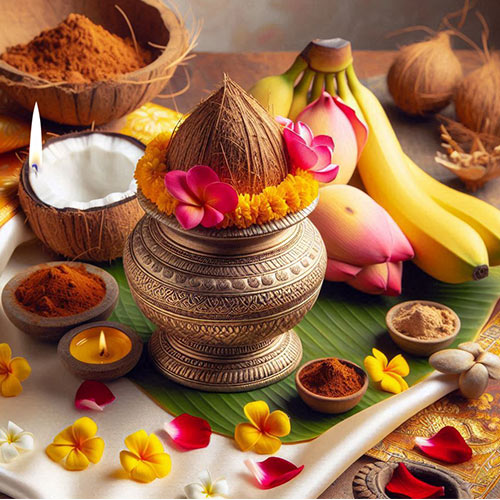
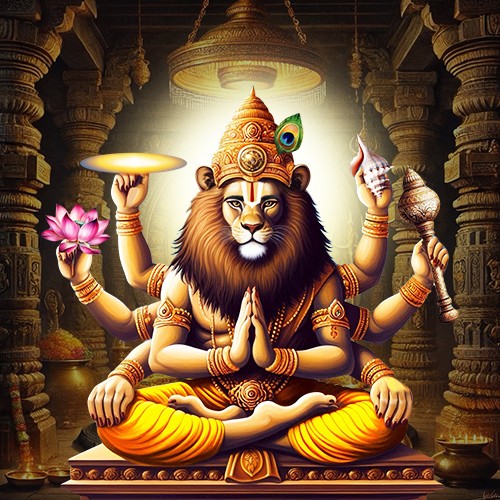
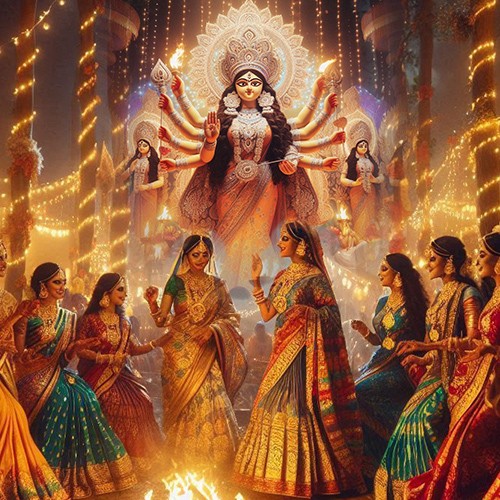
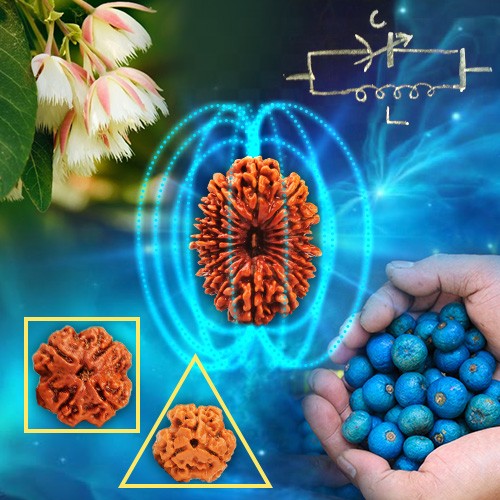

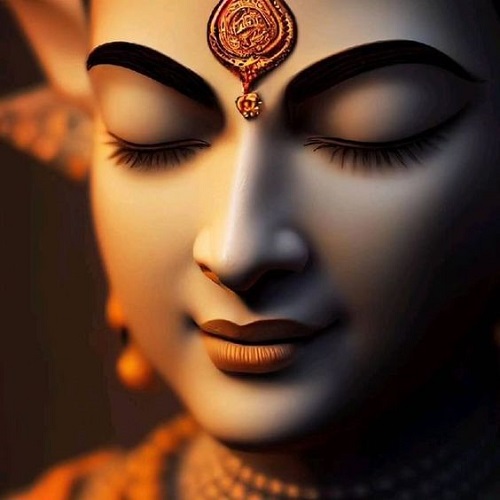
.jpg)
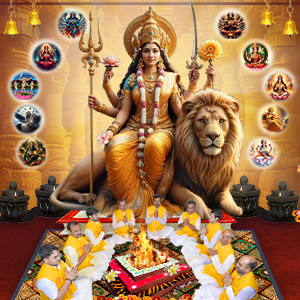
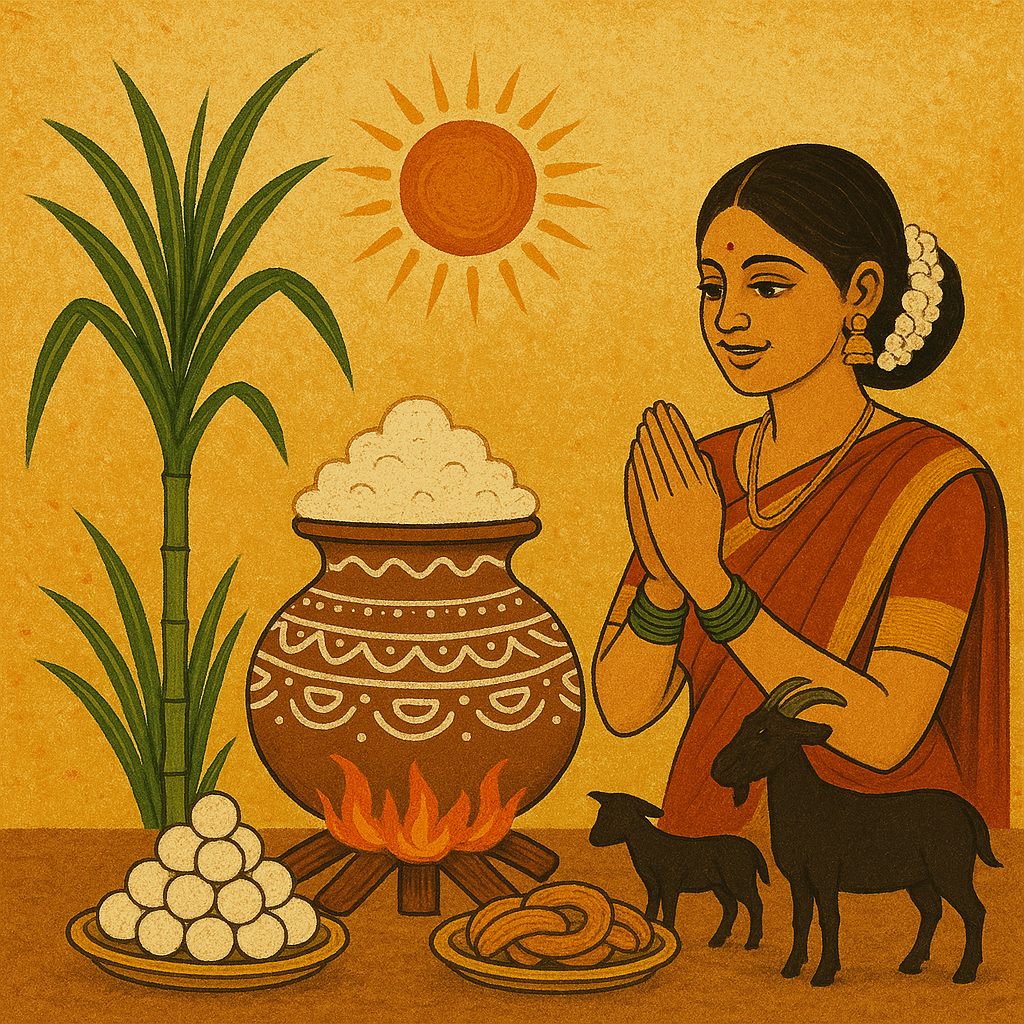
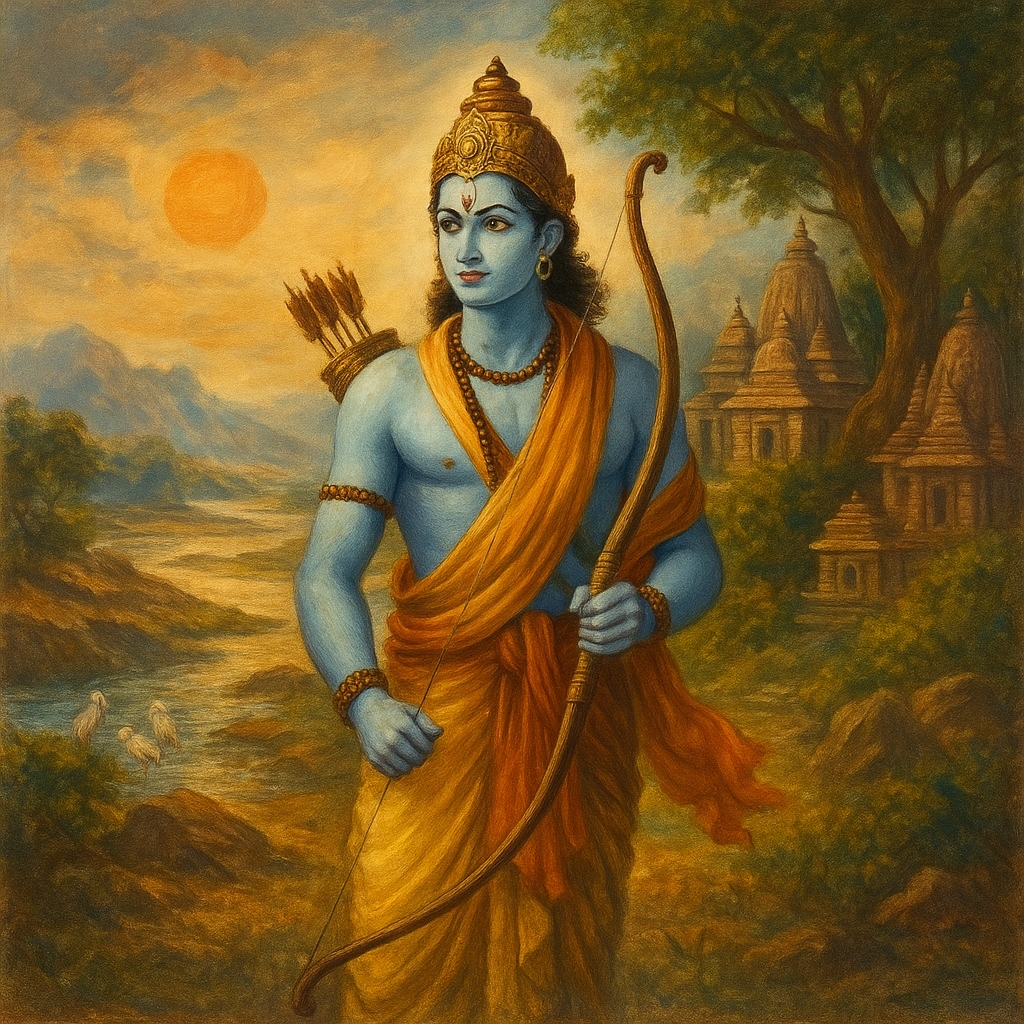
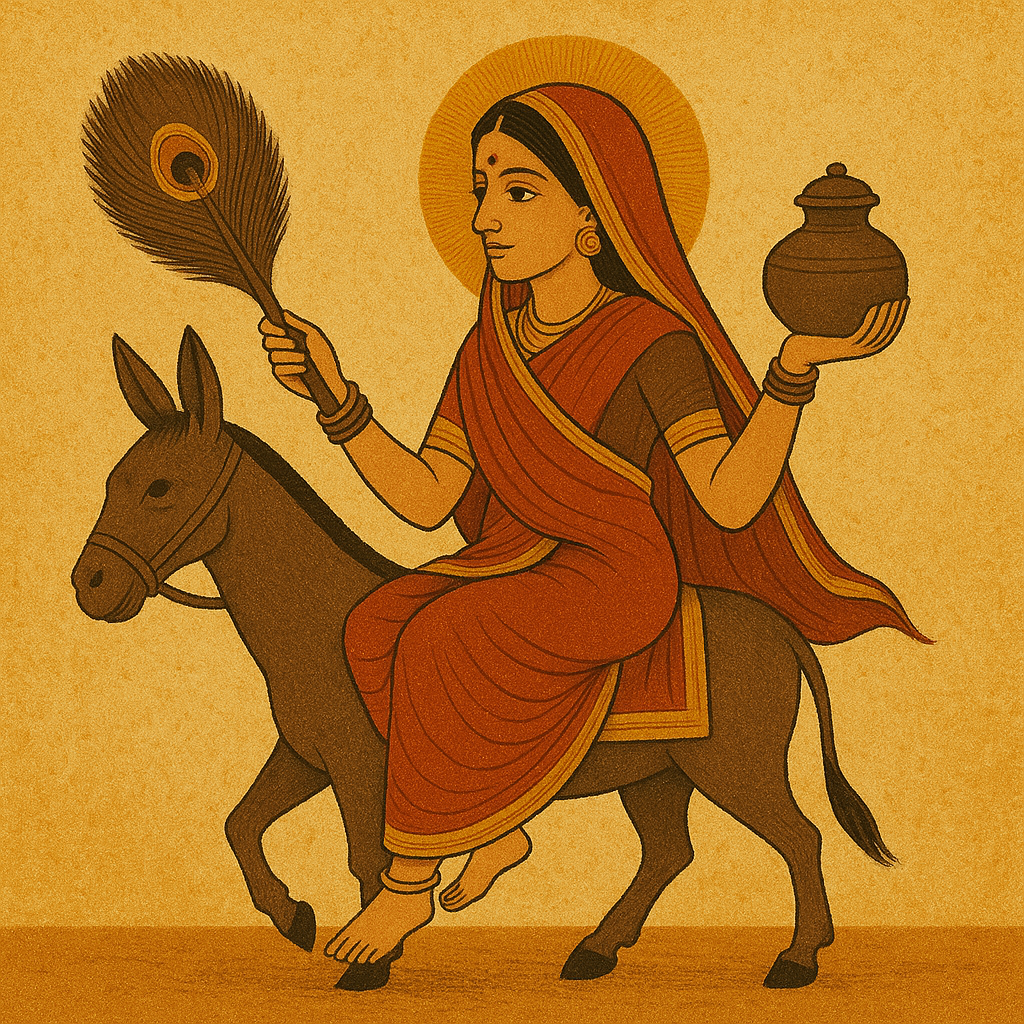
Comments 0
Leave your thought here